-
FACTOR ANALYSIS
-
\r\n\r\n\r\nValue chain Analysis
-
\r\n\r\n\r\nPorter's
-
Five Forces Analysis
-
\r\n\r\n\r\nBargaining Power of Suppliers
-
\r\n\r\n\r\nBargaining
-
Power of Buyers
-
\r\n\r\n\r\nThreat of New Entrants
-
\r\n\r\n\r\nThreat
-
of Substitutes
-
\r\n\r\n\r\nIntensity of Rivalry
-
\r\n\r\n\r\n\r\n\r\nCOVID-19
-
Impact Analysis
-
\r\n\r\n\r\nMarket Impact Analysis
-
\r\n\r\n\r\nRegional
-
Impact
-
\r\n\r\n\r\nOpportunity and Threat Analysis
-
\r\n\r\n\r\n\r\n\r\n\r\n\r\n
-
\r\n
-
\r\n\r\n\r\nNext
-
Generation Sequencing Market, BY Technology (USD Billion)
-
\r\n\r\n\r\nSequencing
-
by Synthesis
-
\r\n\r\n\r\nIon Semiconductor Sequencing
-
\r\n\r\n\r\nSingle-Molecule
-
Real-Time Sequencing
-
\r\n\r\n\r\nNanopore Sequencing
-
\r\n\r\n\r\nOther
-
Technologies
-
\r\n\r\n\r\n\r\n\r\nNext Generation
-
Sequencing Market, BY Product Type (USD Billion)
-
\r\n\r\n\r\nReagents
-
\r\n\r\n\r\nInstruments
-
\r\n\r\n\r\nSoftware
-
\r\n\r\n\r\nServices
-
\r\n\r\n\r\n\r\n\r\nNext
-
Generation Sequencing Market, BY Application (USD Billion)
-
\r\n\r\n\r\nDiagnostics
-
\r\n\r\n\r\nResearch
-
\r\n\r\n\r\nPersonalized
-
Medicine
-
\r\n\r\n\r\nAgrigenomics
-
\r\n\r\n\r\n\r\n\r\nNext
-
Generation Sequencing Market, BY End Use (USD Billion)
-
\r\n\r\n\r\nAcademic
-
Institutes
-
\r\n\r\n\r\nPharmaceutical Companies
-
\r\n\r\n\r\nBiotechnology
-
Companies
-
\r\n\r\n\r\nHospitals and Clinics
-
\r\n\r\n\r\n\r\n\r\nNext
-
Generation Sequencing Market, BY Regional (USD Billion)
-
\r\n\r\n\r\nNorth
-
America
-
\r\n\r\n\r\nUS
-
\r\n\r\n\r\nCanada
-
\r\n\r\n\r\n\r\n\r\nEurope
-
\r\n\r\n\r\nGermany
-
\r\n\r\n\r\nUK
-
\r\n\r\n\r\nFrance
-
\r\n\r\n\r\nRussia
-
\r\n\r\n\r\nItaly
-
\r\n\r\n\r\nSpain
-
\r\n\r\n\r\nRest
-
of Europe
-
\r\n\r\n\r\n\r\n\r\nAPAC
-
\r\n\r\n\r\nChina
-
\r\n\r\n\r\nIndia
-
\r\n\r\n\r\nJapan
-
\r\n\r\n\r\nSouth
-
Korea
-
\r\n\r\n\r\nMalaysia
-
\r\n\r\n\r\nThailand
-
\r\n\r\n\r\nIndonesia
-
\r\n\r\n\r\nRest
-
of APAC
-
\r\n\r\n\r\n\r\n\r\nSouth America
-
\r\n\r\n\r\nBrazil
-
\r\n\r\n\r\nMexico
-
\r\n\r\n\r\nArgentina
-
\r\n\r\n\r\nRest
-
of South America
-
\r\n\r\n\r\n\r\n\r\nMEA
-
\r\n\r\n\r\nGCC
-
Countries
-
\r\n\r\n\r\nSouth Africa
-
\r\n\r\n\r\nRest
-
of MEA
-
\r\n\r\n\r\n\r\n\r\n\r\n\r\n
-
\r\n
-
\r\n\r\n\r\nCompetitive
-
Landscape
-
\r\n\r\n\r\nOverview
-
\r\n\r\n\r\nCompetitive
-
Analysis
-
\r\n\r\n\r\nMarket share Analysis
-
\r\n\r\n\r\nMajor
-
Growth Strategy in the Next Generation Sequencing Market
-
\r\n\r\n\r\nCompetitive
-
Benchmarking
-
\r\n\r\n\r\nLeading Players in Terms of Number of Developments
-
in the Next Generation Sequencing Market
-
\r\n\r\n\r\nKey developments
-
and growth strategies
-
\r\n\r\n\r\nNew Product Launch/Service Deployment
-
\r\n\r\n\r\nMerger
-
& Acquisitions
-
\r\n\r\n\r\nJoint Ventures
-
\r\n\r\n\r\n\r\n\r\nMajor
-
Players Financial Matrix
-
\r\n\r\n\r\nSales and Operating Income
-
\r\n\r\n\r\nMajor
-
Players R&D Expenditure. 2023
-
\r\n\r\n\r\n\r\n\r\n\r\n\r\nCompany
-
Profiles
-
\r\n\r\n\r\nThermo Fisher Scientific
-
\r\n\r\n\r\nFinancial
-
Overview
-
\r\n\r\n\r\nProducts Offered
-
\r\n\r\n\r\nKey
-
Developments
-
\r\n\r\n\r\nSWOT Analysis
-
\r\n\r\n\r\nKey
-
Strategies
-
\r\n\r\n\r\n\r\n\r\nPacific Biosciences
-
\r\n\r\n\r\nFinancial
-
Overview
-
\r\n\r\n\r\nProducts Offered
-
\r\n\r\n\r\nKey
-
Developments
-
\r\n\r\n\r\nSWOT Analysis
-
\r\n\r\n\r\nKey
-
Strategies
-
\r\n\r\n\r\n\r\n\r\nQIAGEN
-
\r\n\r\n\r\nFinancial
-
Overview
-
\r\n\r\n\r\nProducts Offered
-
\r\n\r\n\r\nKey
-
Developments
-
\r\n\r\n\r\nSWOT Analysis
-
\r\n\r\n\r\nKey
-
Strategies
-
\r\n\r\n\r\n\r\n\r\nRoche
-
\r\n\r\n\r\nFinancial
-
Overview
-
\r\n\r\n\r\nProducts Offered
-
\r\n\r\n\r\nKey
-
Developments
-
\r\n\r\n\r\nSWOT Analysis
-
\r\n\r\n\r\nKey
-
Strategies
-
\r\n\r\n\r\n\r\n\r\nBGI Group
-
\r\n\r\n\r\nFinancial
-
Overview
-
\r\n\r\n\r\nProducts Offered
-
\r\n\r\n\r\nKey
-
Developments
-
\r\n\r\n\r\nSWOT Analysis
-
\r\n\r\n\r\nKey
-
Strategies
-
\r\n\r\n\r\n\r\n\r\nIllumina
-
\r\n\r\n\r\nFinancial
-
Overview
-
\r\n\r\n\r\nProducts Offered
-
\r\n\r\n\r\nKey
-
Developments
-
\r\n\r\n\r\nSWOT Analysis
-
\r\n\r\n\r\nKey
-
Strategies
-
\r\n\r\n\r\n\r\n\r\nDanaher Corporation
-
\r\n\r\n\r\nFinancial
-
Overview
-
\r\n\r\n\r\nProducts Offered
-
\r\n\r\n\r\nKey
-
Developments
-
\r\n\r\n\r\nSWOT Analysis
-
\r\n\r\n\r\nKey
-
Strategies
-
\r\n\r\n\r\n\r\n\r\nPerkinElmer
-
\r\n\r\n\r\nFinancial
-
Overview
-
\r\n\r\n\r\nProducts Offered
-
\r\n\r\n\r\nKey
-
Developments
-
\r\n\r\n\r\nSWOT Analysis
-
\r\n\r\n\r\nKey
-
Strategies
-
\r\n\r\n\r\n\r\n\r\nAgilent Technologies
-
\r\n\r\n\r\nFinancial
-
Overview
-
\r\n\r\n\r\nProducts Offered
-
\r\n\r\n\r\nKey
-
Developments
-
\r\n\r\n\r\nSWOT Analysis
-
\r\n\r\n\r\nKey
-
Strategies
-
\r\n\r\n\r\n\r\n\r\nArray Biologicals
-
\r\n\r\n\r\nFinancial
-
Overview
-
\r\n\r\n\r\nProducts Offered
-
\r\n\r\n\r\nKey
-
Developments
-
\r\n\r\n\r\nSWOT Analysis
-
\r\n\r\n\r\nKey
-
Strategies
-
\r\n\r\n\r\n\r\n\r\nMyraqa
-
\r\n\r\n\r\nFinancial
-
Overview
-
\r\n\r\n\r\nProducts Offered
-
\r\n\r\n\r\nKey
-
Developments
-
\r\n\r\n\r\nSWOT Analysis
-
\r\n\r\n\r\nKey
-
Strategies
-
\r\n\r\n\r\n\r\n\r\nOxford Nanopore Technologies
-
\r\n\r\n\r\nFinancial
-
Overview
-
\r\n\r\n\r\nProducts Offered
-
\r\n\r\n\r\nKey
-
Developments
-
\r\n\r\n\r\nSWOT Analysis
-
\r\n\r\n\r\nKey
-
Strategies
-
\r\n\r\n\r\n\r\n\r\nMicrosynth
-
\r\n\r\n\r\nFinancial
-
Overview
-
\r\n\r\n\r\nProducts Offered
-
\r\n\r\n\r\nKey
-
Developments
-
\r\n\r\n\r\nSWOT Analysis
-
\r\n\r\n\r\nKey
-
Strategies
-
\r\n\r\n\r\n\r\n\r\nGenesis HealthCare
-
\r\n\r\n\r\nFinancial
-
Overview
-
\r\n\r\n\r\nProducts Offered
-
\r\n\r\n\r\nKey
-
Developments
-
\r\n\r\n\r\nSWOT Analysis
-
\r\n\r\n\r\nKey
-
Strategies
-
\r\n\r\n\r\n\r\n\r\n\r\n\r\nAppendix
-
\r\n\r\n\r\nReferences
-
\r\n\r\n\r\nRelated
-
Reports
-
\r\n\r\n\r\n\r\n\r\nLIST Of tables
-
\r\n
-
\r\n\r\n\r\nLIST
-
OF ASSUMPTIONS
-
\r\n\r\n\r\nNorth America Next Generation Sequencing
-
Market SIZE ESTIMATES & FORECAST, BY TECHNOLOGY, 2019-2035 (USD Billions)
-
\r\n\r\n\r\nNorth
-
America Next Generation Sequencing Market SIZE ESTIMATES & FORECAST, BY PRODUCT
-
TYPE, 2019-2035 (USD Billions)
-
\r\n\r\n\r\nNorth America Next Generation
-
Sequencing Market SIZE ESTIMATES & FORECAST, BY APPLICATION, 2019-2035 (USD
-
Billions)
-
\r\n\r\n\r\nNorth America Next Generation Sequencing Market
-
SIZE ESTIMATES & FORECAST, BY END USE, 2019-2035 (USD Billions)
-
\r\n\r\n\r\nNorth
-
America Next Generation Sequencing Market SIZE ESTIMATES & FORECAST, BY REGIONAL,
-
\r\n\r\n\r\nUS Next Generation Sequencing
-
Market SIZE ESTIMATES & FORECAST, BY TECHNOLOGY, 2019-2035 (USD Billions)
-
\r\n\r\n\r\nUS
-
Next Generation Sequencing Market SIZE ESTIMATES & FORECAST, BY PRODUCT TYPE,
-
\r\n\r\n\r\nUS Next Generation Sequencing
-
Market SIZE ESTIMATES & FORECAST, BY APPLICATION, 2019-2035 (USD Billions)
-
\r\n\r\n\r\nUS
-
Next Generation Sequencing Market SIZE ESTIMATES & FORECAST, BY END USE, 2019-2035
-
(USD Billions)
-
\r\n\r\n\r\nUS Next Generation Sequencing Market SIZE
-
ESTIMATES & FORECAST, BY REGIONAL, 2019-2035 (USD Billions)
-
\r\n\r\n\r\nCanada
-
Next Generation Sequencing Market SIZE ESTIMATES & FORECAST, BY TECHNOLOGY,
-
\r\n\r\n\r\nCanada Next Generation Sequencing
-
Market SIZE ESTIMATES & FORECAST, BY PRODUCT TYPE, 2019-2035 (USD Billions)
-
\r\n\r\n\r\nCanada
-
Next Generation Sequencing Market SIZE ESTIMATES & FORECAST, BY APPLICATION,
-
\r\n\r\n\r\nCanada Next Generation Sequencing
-
Market SIZE ESTIMATES & FORECAST, BY END USE, 2019-2035 (USD Billions)
-
\r\n\r\n\r\nCanada
-
Next Generation Sequencing Market SIZE ESTIMATES & FORECAST, BY REGIONAL, 2019-2035
-
(USD Billions)
-
\r\n\r\n\r\nEurope Next Generation Sequencing Market
-
SIZE ESTIMATES & FORECAST, BY TECHNOLOGY, 2019-2035 (USD Billions)
-
\r\n\r\n\r\nEurope
-
Next Generation Sequencing Market SIZE ESTIMATES & FORECAST, BY PRODUCT TYPE,
-
\r\n\r\n\r\nEurope Next Generation Sequencing
-
Market SIZE ESTIMATES & FORECAST, BY APPLICATION, 2019-2035 (USD Billions)
-
\r\n\r\n\r\nEurope
-
Next Generation Sequencing Market SIZE ESTIMATES & FORECAST, BY END USE, 2019-2035
-
(USD Billions)
-
\r\n\r\n\r\nEurope Next Generation Sequencing Market
-
SIZE ESTIMATES & FORECAST, BY REGIONAL, 2019-2035 (USD Billions)
-
\r\n\r\n\r\nGermany
-
Next Generation Sequencing Market SIZE ESTIMATES & FORECAST, BY TECHNOLOGY,
-
\r\n\r\n\r\nGermany Next Generation Sequencing
-
Market SIZE ESTIMATES & FORECAST, BY PRODUCT TYPE, 2019-2035 (USD Billions)
-
\r\n\r\n\r\nGermany
-
Next Generation Sequencing Market SIZE ESTIMATES & FORECAST, BY APPLICATION,
-
\r\n\r\n\r\nGermany Next Generation Sequencing
-
Market SIZE ESTIMATES & FORECAST, BY END USE, 2019-2035 (USD Billions)
-
\r\n\r\n\r\nGermany
-
Next Generation Sequencing Market SIZE ESTIMATES & FORECAST, BY REGIONAL, 2019-2035
-
(USD Billions)
-
\r\n\r\n\r\nUK Next Generation Sequencing Market SIZE
-
ESTIMATES & FORECAST, BY TECHNOLOGY, 2019-2035 (USD Billions)
-
\r\n\r\n\r\nUK
-
Next Generation Sequencing Market SIZE ESTIMATES & FORECAST, BY PRODUCT TYPE,
-
\r\n\r\n\r\nUK Next Generation Sequencing
-
Market SIZE ESTIMATES & FORECAST, BY APPLICATION, 2019-2035 (USD Billions)
-
\r\n\r\n\r\nUK
-
Next Generation Sequencing Market SIZE ESTIMATES & FORECAST, BY END USE, 2019-2035
-
(USD Billions)
-
\r\n\r\n\r\nUK Next Generation Sequencing Market SIZE
-
ESTIMATES & FORECAST, BY REGIONAL, 2019-2035 (USD Billions)
-
\r\n\r\n\r\nFrance
-
Next Generation Sequencing Market SIZE ESTIMATES & FORECAST, BY TECHNOLOGY,
-
\r\n\r\n\r\nFrance Next Generation Sequencing
-
Market SIZE ESTIMATES & FORECAST, BY PRODUCT TYPE, 2019-2035 (USD Billions)
-
\r\n\r\n\r\nFrance
-
Next Generation Sequencing Market SIZE ESTIMATES & FORECAST, BY APPLICATION,
-
\r\n\r\n\r\nFrance Next Generation Sequencing
-
Market SIZE ESTIMATES & FORECAST, BY END USE, 2019-2035 (USD Billions)
-
\r\n\r\n\r\nFrance
-
Next Generation Sequencing Market SIZE ESTIMATES & FORECAST, BY REGIONAL, 2019-2035
-
(USD Billions)
-
\r\n\r\n\r\nRussia Next Generation Sequencing Market
-
SIZE ESTIMATES & FORECAST, BY TECHNOLOGY, 2019-2035 (USD Billions)
-
\r\n\r\n\r\nRussia
-
Next Generation Sequencing Market SIZE ESTIMATES & FORECAST, BY PRODUCT TYPE,
-
\r\n\r\n\r\nRussia Next Generation Sequencing
-
Market SIZE ESTIMATES & FORECAST, BY APPLICATION, 2019-2035 (USD Billions)
-
\r\n\r\n\r\nRussia
-
Next Generation Sequencing Market SIZE ESTIMATES & FORECAST, BY END USE, 2019-2035
-
(USD Billions)
-
\r\n\r\n\r\nRussia Next Generation Sequencing Market
-
SIZE ESTIMATES & FORECAST, BY REGIONAL, 2019-2035 (USD Billions)
-
\r\n\r\n\r\nItaly
-
Next Generation Sequencing Market SIZE ESTIMATES & FORECAST, BY TECHNOLOGY,
-
\r\n\r\n\r\nItaly Next Generation Sequencing
-
Market SIZE ESTIMATES & FORECAST, BY PRODUCT TYPE, 2019-2035 (USD Billions)
-
\r\n\r\n\r\nItaly
-
Next Generation Sequencing Market SIZE ESTIMATES & FORECAST, BY APPLICATION,
-
\r\n\r\n\r\nItaly Next Generation Sequencing
-
Market SIZE ESTIMATES & FORECAST, BY END USE, 2019-2035 (USD Billions)
-
\r\n\r\n\r\nItaly
-
Next Generation Sequencing Market SIZE ESTIMATES & FORECAST, BY REGIONAL, 2019-2035
-
(USD Billions)
-
\r\n\r\n\r\nSpain Next Generation Sequencing Market
-
SIZE ESTIMATES & FORECAST, BY TECHNOLOGY, 2019-2035 (USD Billions)
-
\r\n\r\n\r\nSpain
-
Next Generation Sequencing Market SIZE ESTIMATES & FORECAST, BY PRODUCT TYPE,
-
\r\n\r\n\r\nSpain Next Generation Sequencing
-
Market SIZE ESTIMATES & FORECAST, BY APPLICATION, 2019-2035 (USD Billions)
-
\r\n\r\n\r\nSpain
-
Next Generation Sequencing Market SIZE ESTIMATES & FORECAST, BY END USE, 2019-2035
-
(USD Billions)
-
\r\n\r\n\r\nSpain Next Generation Sequencing Market
-
SIZE ESTIMATES & FORECAST, BY REGIONAL, 2019-2035 (USD Billions)
-
\r\n\r\n\r\nRest
-
of Europe Next Generation Sequencing Market SIZE ESTIMATES & FORECAST, BY TECHNOLOGY,
-
\r\n\r\n\r\nRest of Europe Next Generation
-
Sequencing Market SIZE ESTIMATES & FORECAST, BY PRODUCT TYPE, 2019-2035 (USD
-
Billions)
-
\r\n\r\n\r\nRest of Europe Next Generation Sequencing Market
-
SIZE ESTIMATES & FORECAST, BY APPLICATION, 2019-2035 (USD Billions)
-
\r\n\r\n\r\nRest
-
of Europe Next Generation Sequencing Market SIZE ESTIMATES & FORECAST, BY END
-
USE, 2019-2035 (USD Billions)
-
\r\n\r\n\r\nRest of Europe Next Generation
-
Sequencing Market SIZE ESTIMATES & FORECAST, BY REGIONAL, 2019-2035 (USD Billions)
-
\r\n\r\n\r\nAPAC
-
Next Generation Sequencing Market SIZE ESTIMATES & FORECAST, BY TECHNOLOGY,
-
\r\n\r\n\r\nAPAC Next Generation Sequencing
-
Market SIZE ESTIMATES & FORECAST, BY PRODUCT TYPE, 2019-2035 (USD Billions)
-
\r\n\r\n\r\nAPAC
-
Next Generation Sequencing Market SIZE ESTIMATES & FORECAST, BY APPLICATION,
-
\r\n\r\n\r\nAPAC Next Generation Sequencing
-
Market SIZE ESTIMATES & FORECAST, BY END USE, 2019-2035 (USD Billions)
-
\r\n\r\n\r\nAPAC
-
Next Generation Sequencing Market SIZE ESTIMATES & FORECAST, BY REGIONAL, 2019-2035
-
(USD Billions)
-
\r\n\r\n\r\nChina Next Generation Sequencing Market
-
SIZE ESTIMATES & FORECAST, BY TECHNOLOGY, 2019-2035 (USD Billions)
-
\r\n\r\n\r\nChina
-
Next Generation Sequencing Market SIZE ESTIMATES & FORECAST, BY PRODUCT TYPE,
-
\r\n\r\n\r\nChina Next Generation Sequencing
-
Market SIZE ESTIMATES & FORECAST, BY APPLICATION, 2019-2035 (USD Billions)
-
\r\n\r\n\r\nChina
-
Next Generation Sequencing Market SIZE ESTIMATES & FORECAST, BY END USE, 2019-2035
-
(USD Billions)
-
\r\n\r\n\r\nChina Next Generation Sequencing Market
-
SIZE ESTIMATES & FORECAST, BY REGIONAL, 2019-2035 (USD Billions)
-
\r\n\r\n\r\nIndia
-
Next Generation Sequencing Market SIZE ESTIMATES & FORECAST, BY TECHNOLOGY,
-
\r\n\r\n\r\nIndia Next Generation Sequencing
-
Market SIZE ESTIMATES & FORECAST, BY PRODUCT TYPE, 2019-2035 (USD Billions)
-
\r\n\r\n\r\nIndia
-
Next Generation Sequencing Market SIZE ESTIMATES & FORECAST, BY APPLICATION,
-
\r\n\r\n\r\nIndia Next Generation Sequencing
-
Market SIZE ESTIMATES & FORECAST, BY END USE, 2019-2035 (USD Billions)
-
\r\n\r\n\r\nIndia
-
Next Generation Sequencing Market SIZE ESTIMATES & FORECAST, BY REGIONAL, 2019-2035
-
(USD Billions)
-
\r\n\r\n\r\nJapan Next Generation Sequencing Market
-
SIZE ESTIMATES & FORECAST, BY TECHNOLOGY, 2019-2035 (USD Billions)
-
\r\n\r\n\r\nJapan
-
Next Generation Sequencing Market SIZE ESTIMATES & FORECAST, BY PRODUCT TYPE,
-
\r\n\r\n\r\nJapan Next Generation Sequencing
-
Market SIZE ESTIMATES & FORECAST, BY APPLICATION, 2019-2035 (USD Billions)
-
\r\n\r\n\r\nJapan
-
Next Generation Sequencing Market SIZE ESTIMATES & FORECAST, BY END USE, 2019-2035
-
(USD Billions)
-
\r\n\r\n\r\nJapan Next Generation Sequencing Market
-
SIZE ESTIMATES & FORECAST, BY REGIONAL, 2019-2035 (USD Billions)
-
\r\n\r\n\r\nSouth
-
Korea Next Generation Sequencing Market SIZE ESTIMATES & FORECAST, BY TECHNOLOGY,
-
\r\n\r\n\r\nSouth Korea Next Generation
-
Sequencing Market SIZE ESTIMATES & FORECAST, BY PRODUCT TYPE, 2019-2035 (USD
-
Billions)
-
\r\n\r\n\r\nSouth Korea Next Generation Sequencing Market
-
SIZE ESTIMATES & FORECAST, BY APPLICATION, 2019-2035 (USD Billions)
-
\r\n\r\n\r\nSouth
-
Korea Next Generation Sequencing Market SIZE ESTIMATES & FORECAST, BY END USE,
-
\r\n\r\n\r\nSouth Korea Next Generation
-
Sequencing Market SIZE ESTIMATES & FORECAST, BY REGIONAL, 2019-2035 (USD Billions)
-
\r\n\r\n\r\nMalaysia
-
Next Generation Sequencing Market SIZE ESTIMATES & FORECAST, BY TECHNOLOGY,
-
\r\n\r\n\r\nMalaysia Next Generation Sequencing
-
Market SIZE ESTIMATES & FORECAST, BY PRODUCT TYPE, 2019-2035 (USD Billions)
-
\r\n\r\n\r\nMalaysia
-
Next Generation Sequencing Market SIZE ESTIMATES & FORECAST, BY APPLICATION,
-
\r\n\r\n\r\nMalaysia Next Generation Sequencing
-
Market SIZE ESTIMATES & FORECAST, BY END USE, 2019-2035 (USD Billions)
-
\r\n\r\n\r\nMalaysia
-
Next Generation Sequencing Market SIZE ESTIMATES & FORECAST, BY REGIONAL, 2019-2035
-
(USD Billions)
-
\r\n\r\n\r\nThailand Next Generation Sequencing Market
-
SIZE ESTIMATES & FORECAST, BY TECHNOLOGY, 2019-2035 (USD Billions)
-
\r\n\r\n\r\nThailand
-
Next Generation Sequencing Market SIZE ESTIMATES & FORECAST, BY PRODUCT TYPE,
-
\r\n\r\n\r\nThailand Next Generation Sequencing
-
Market SIZE ESTIMATES & FORECAST, BY APPLICATION, 2019-2035 (USD Billions)
-
\r\n\r\n\r\nThailand
-
Next Generation Sequencing Market SIZE ESTIMATES & FORECAST, BY END USE, 2019-2035
-
(USD Billions)
-
\r\n\r\n\r\nThailand Next Generation Sequencing Market
-
SIZE ESTIMATES & FORECAST, BY REGIONAL, 2019-2035 (USD Billions)
-
\r\n\r\n\r\nIndonesia
-
Next Generation Sequencing Market SIZE ESTIMATES & FORECAST, BY TECHNOLOGY,
-
\r\n\r\n\r\nIndonesia Next Generation Sequencing
-
Market SIZE ESTIMATES & FORECAST, BY PRODUCT TYPE, 2019-2035 (USD Billions)
-
\r\n\r\n\r\nIndonesia
-
Next Generation Sequencing Market SIZE ESTIMATES & FORECAST, BY APPLICATION,
-
\r\n\r\n\r\nIndonesia Next Generation Sequencing
-
Market SIZE ESTIMATES & FORECAST, BY END USE, 2019-2035 (USD Billions)
-
\r\n\r\n\r\nIndonesia
-
Next Generation Sequencing Market SIZE ESTIMATES & FORECAST, BY REGIONAL, 2019-2035
-
(USD Billions)
-
\r\n\r\n\r\nRest of APAC Next Generation Sequencing
-
Market SIZE ESTIMATES & FORECAST, BY TECHNOLOGY, 2019-2035 (USD Billions)
-
\r\n\r\n\r\nRest
-
of APAC Next Generation Sequencing Market SIZE ESTIMATES & FORECAST, BY PRODUCT
-
TYPE, 2019-2035 (USD Billions)
-
\r\n\r\n\r\nRest of APAC Next Generation
-
Sequencing Market SIZE ESTIMATES & FORECAST, BY APPLICATION, 2019-2035 (USD
-
Billions)
-
\r\n\r\n\r\nRest of APAC Next Generation Sequencing Market
-
SIZE ESTIMATES & FORECAST, BY END USE, 2019-2035 (USD Billions)
-
\r\n\r\n\r\nRest
-
of APAC Next Generation Sequencing Market SIZE ESTIMATES & FORECAST, BY REGIONAL,
-
\r\n\r\n\r\nSouth America Next Generation
-
Sequencing Market SIZE ESTIMATES & FORECAST, BY TECHNOLOGY, 2019-2035 (USD Billions)
-
\r\n\r\n\r\nSouth
-
America Next Generation Sequencing Market SIZE ESTIMATES & FORECAST, BY PRODUCT
-
TYPE, 2019-2035 (USD Billions)
-
\r\n\r\n\r\nSouth America Next Generation
-
Sequencing Market SIZE ESTIMATES & FORECAST, BY APPLICATION, 2019-2035 (USD
-
Billions)
-
\r\n\r\n\r\nSouth America Next Generation Sequencing Market
-
SIZE ESTIMATES & FORECAST, BY END USE, 2019-2035 (USD Billions)
-
\r\n\r\n\r\nSouth
-
America Next Generation Sequencing Market SIZE ESTIMATES & FORECAST, BY REGIONAL,
-
\r\n\r\n\r\nBrazil Next Generation Sequencing
-
Market SIZE ESTIMATES & FORECAST, BY TECHNOLOGY, 2019-2035 (USD Billions)
-
\r\n\r\n\r\nBrazil
-
Next Generation Sequencing Market SIZE ESTIMATES & FORECAST, BY PRODUCT TYPE,
-
\r\n\r\n\r\nBrazil Next Generation Sequencing
-
Market SIZE ESTIMATES & FORECAST, BY APPLICATION, 2019-2035 (USD Billions)
-
\r\n\r\n\r\nBrazil
-
Next Generation Sequencing Market SIZE ESTIMATES & FORECAST, BY END USE, 2019-2035
-
(USD Billions)
-
\r\n\r\n\r\nBrazil Next Generation Sequencing Market
-
SIZE ESTIMATES & FORECAST, BY REGIONAL, 2019-2035 (USD Billions)
-
\r\n\r\n\r\nMexico
-
Next Generation Sequencing Market SIZE ESTIMATES & FORECAST, BY TECHNOLOGY,
-
\r\n\r\n\r\nMexico Next Generation Sequencing
-
Market SIZE ESTIMATES & FORECAST, BY PRODUCT TYPE, 2019-2035 (USD Billions)
-
\r\n\r\n\r\nMexico
-
Next Generation Sequencing Market SIZE ESTIMATES & FORECAST, BY APPLICATION,
-
\r\n\r\n\r\nMexico Next Generation Sequencing
-
Market SIZE ESTIMATES & FORECAST, BY END USE, 2019-2035 (USD Billions)
-
\r\n\r\n\r\nMexico
-
Next Generation Sequencing Market SIZE ESTIMATES & FORECAST, BY REGIONAL, 2019-2035
-
(USD Billions)
-
\r\n\r\n\r\nArgentina Next Generation Sequencing Market
-
SIZE ESTIMATES & FORECAST, BY TECHNOLOGY, 2019-2035 (USD Billions)
-
\r\n\r\n\r\nArgentina
-
Next Generation Sequencing Market SIZE ESTIMATES & FORECAST, BY PRODUCT TYPE,
-
\r\n\r\n\r\nArgentina Next Generation Sequencing
-
Market SIZE ESTIMATES & FORECAST, BY APPLICATION, 2019-2035 (USD Billions)
-
\r\n\r\n\r\nArgentina
-
Next Generation Sequencing Market SIZE ESTIMATES & FORECAST, BY END USE, 2019-2035
-
(USD Billions)
-
\r\n\r\n\r\nArgentina Next Generation Sequencing Market
-
SIZE ESTIMATES & FORECAST, BY REGIONAL, 2019-2035 (USD Billions)
-
\r\n\r\n\r\nRest
-
of South America Next Generation Sequencing Market SIZE ESTIMATES & FORECAST,
-
BY TECHNOLOGY, 2019-2035 (USD Billions)
-
\r\n\r\n\r\nRest of South
-
America Next Generation Sequencing Market SIZE ESTIMATES & FORECAST, BY PRODUCT
-
TYPE, 2019-2035 (USD Billions)
-
\r\n\r\n\r\nRest of South America
-
Next Generation Sequencing Market SIZE ESTIMATES & FORECAST, BY APPLICATION,
-
\r\n\r\n\r\nRest of South America Next Generation
-
Sequencing Market SIZE ESTIMATES & FORECAST, BY END USE, 2019-2035 (USD Billions)
-
\r\n\r\n\r\nRest
-
of South America Next Generation Sequencing Market SIZE ESTIMATES & FORECAST,
-
BY REGIONAL, 2019-2035 (USD Billions)
-
\r\n\r\n\r\nMEA Next Generation
-
Sequencing Market SIZE ESTIMATES & FORECAST, BY TECHNOLOGY, 2019-2035 (USD Billions)
-
\r\n\r\n\r\nMEA
-
Next Generation Sequencing Market SIZE ESTIMATES & FORECAST, BY PRODUCT TYPE,
-
\r\n\r\n\r\nMEA Next Generation Sequencing
-
Market SIZE ESTIMATES & FORECAST, BY APPLICATION, 2019-2035 (USD Billions)
-
\r\n\r\n\r\nMEA
-
Next Generation Sequencing Market SIZE ESTIMATES & FORECAST, BY END USE, 2019-2035
-
(USD Billions)
-
\r\n\r\n\r\nMEA Next Generation Sequencing Market
-
SIZE ESTIMATES & FORECAST, BY REGIONAL, 2019-2035 (USD Billions)
-
\r\n\r\n\r\nGCC
-
Countries Next Generation Sequencing Market SIZE ESTIMATES & FORECAST, BY TECHNOLOGY,
-
\r\n\r\n\r\nGCC Countries Next Generation
-
Sequencing Market SIZE ESTIMATES & FORECAST, BY PRODUCT TYPE, 2019-2035 (USD
-
Billions)
-
\r\n\r\n\r\nGCC Countries Next Generation Sequencing Market
-
SIZE ESTIMATES & FORECAST, BY APPLICATION, 2019-2035 (USD Billions)
-
\r\n\r\n\r\nGCC
-
Countries Next Generation Sequencing Market SIZE ESTIMATES & FORECAST, BY END
-
USE, 2019-2035 (USD Billions)
-
\r\n\r\n\r\nGCC Countries Next Generation
-
Sequencing Market SIZE ESTIMATES & FORECAST, BY REGIONAL, 2019-2035 (USD Billions)
-
\r\n\r\n\r\nSouth
-
Africa Next Generation Sequencing Market SIZE ESTIMATES & FORECAST, BY TECHNOLOGY,
-
\r\n\r\n\r\nSouth Africa Next Generation
-
Sequencing Market SIZE ESTIMATES & FORECAST, BY PRODUCT TYPE, 2019-2035 (USD
-
Billions)
-
\r\n\r\n\r\nSouth Africa Next Generation Sequencing Market
-
SIZE ESTIMATES & FORECAST, BY APPLICATION, 2019-2035 (USD Billions)
-
\r\n\r\n\r\nSouth
-
Africa Next Generation Sequencing Market SIZE ESTIMATES & FORECAST, BY END USE,
-
\r\n\r\n\r\nSouth Africa Next Generation
-
Sequencing Market SIZE ESTIMATES & FORECAST, BY REGIONAL, 2019-2035 (USD Billions)
-
\r\n\r\n\r\nRest
-
of MEA Next Generation Sequencing Market SIZE ESTIMATES & FORECAST, BY TECHNOLOGY,
-
\r\n\r\n\r\nRest of MEA Next Generation
-
Sequencing Market SIZE ESTIMATES & FORECAST, BY PRODUCT TYPE, 2019-2035 (USD
-
Billions)
-
\r\n\r\n\r\nRest of MEA Next Generation Sequencing Market
-
SIZE ESTIMATES & FORECAST, BY APPLICATION, 2019-2035 (USD Billions)
-
\r\n\r\n\r\nRest
-
of MEA Next Generation Sequencing Market SIZE ESTIMATES & FORECAST, BY END USE,
-
\r\n\r\n\r\nRest of MEA Next Generation
-
Sequencing Market SIZE ESTIMATES & FORECAST, BY REGIONAL, 2019-2035 (USD Billions)
-
\r\n\r\n\r\nPRODUCT
-
LAUNCH/PRODUCT DEVELOPMENT/APPROVAL
-
\r\n\r\n\r\nACQUISITION/PARTNERSHIP
-
\r\n\r\n\r\n
-
\r\n
-
\r\n
-
\r\n
-
\r\n
-
\r\n
-
\r\n
-
\r\n
-
\r\n
-
\r\n
-
\r\n
-
\r\n
-
\r\n
-
\r\n
-
\r\n
-
\r\n
-
\r\n
-
\r\n
-
\r\n
-
\r\n
-
\r\n
-
\r\n
-
\r\n
-
\r\n
-
\r\n
-
\r\n
-
\r\n
-
\r\n
-
\r\n
-
\r\nLIST
-
Of figures
-
\r\n
-
\r\n\r\n\r\nMARKET SYNOPSIS
-
\r\n\r\n\r\nNORTH
-
AMERICA NEXT GENERATION SEQUENCING MARKET ANALYSIS
-
\r\n\r\n\r\nUS
-
NEXT GENERATION SEQUENCING MARKET ANALYSIS BY TECHNOLOGY
-
\r\n\r\n\r\nUS
-
NEXT GENERATION SEQUENCING MARKET ANALYSIS BY PRODUCT TYPE
-
\r\n\r\n\r\nUS
-
NEXT GENERATION SEQUENCING MARKET ANALYSIS BY APPLICATION
-
\r\n\r\n\r\nUS
-
NEXT GENERATION SEQUENCING MARKET ANALYSIS BY END USE
-
\r\n\r\n\r\nUS
-
NEXT GENERATION SEQUENCING MARKET ANALYSIS BY REGIONAL
-
\r\n\r\n\r\nCANADA
-
NEXT GENERATION SEQUENCING MARKET ANALYSIS BY TECHNOLOGY
-
\r\n\r\n\r\nCANADA
-
NEXT GENERATION SEQUENCING MARKET ANALYSIS BY PRODUCT TYPE
-
\r\n\r\n\r\nCANADA
-
NEXT GENERATION SEQUENCING MARKET ANALYSIS BY APPLICATION
-
\r\n\r\n\r\nCANADA
-
NEXT GENERATION SEQUENCING MARKET ANALYSIS BY END USE
-
\r\n\r\n\r\nCANADA
-
NEXT GENERATION SEQUENCING MARKET ANALYSIS BY REGIONAL
-
\r\n\r\n\r\nEUROPE
-
NEXT GENERATION SEQUENCING MARKET ANALYSIS
-
\r\n\r\n\r\nGERMANY NEXT
-
GENERATION SEQUENCING MARKET ANALYSIS BY TECHNOLOGY
-
\r\n\r\n\r\nGERMANY
-
NEXT GENERATION SEQUENCING MARKET ANALYSIS BY PRODUCT TYPE
-
\r\n\r\n\r\nGERMANY
-
NEXT GENERATION SEQUENCING MARKET ANALYSIS BY APPLICATION
-
\r\n\r\n\r\nGERMANY
-
NEXT GENERATION SEQUENCING MARKET ANALYSIS BY END USE
-
\r\n\r\n\r\nGERMANY
-
NEXT GENERATION SEQUENCING MARKET ANALYSIS BY REGIONAL
-
\r\n\r\n\r\nUK
-
NEXT GENERATION SEQUENCING MARKET ANALYSIS BY TECHNOLOGY
-
\r\n\r\n\r\nUK
-
NEXT GENERATION SEQUENCING MARKET ANALYSIS BY PRODUCT TYPE
-
\r\n\r\n\r\nUK
-
NEXT GENERATION SEQUENCING MARKET ANALYSIS BY APPLICATION
-
\r\n\r\n\r\nUK
-
NEXT GENERATION SEQUENCING MARKET ANALYSIS BY END USE
-
\r\n\r\n\r\nUK
-
NEXT GENERATION SEQUENCING MARKET ANALYSIS BY REGIONAL
-
\r\n\r\n\r\nFRANCE
-
NEXT GENERATION SEQUENCING MARKET ANALYSIS BY TECHNOLOGY
-
\r\n\r\n\r\nFRANCE
-
NEXT GENERATION SEQUENCING MARKET ANALYSIS BY PRODUCT TYPE
-
\r\n\r\n\r\nFRANCE
-
NEXT GENERATION SEQUENCING MARKET ANALYSIS BY APPLICATION
-
\r\n\r\n\r\nFRANCE
-
NEXT GENERATION SEQUENCING MARKET ANALYSIS BY END USE
-
\r\n\r\n\r\nFRANCE
-
NEXT GENERATION SEQUENCING MARKET ANALYSIS BY REGIONAL
-
\r\n\r\n\r\nRUSSIA
-
NEXT GENERATION SEQUENCING MARKET ANALYSIS BY TECHNOLOGY
-
\r\n\r\n\r\nRUSSIA
-
NEXT GENERATION SEQUENCING MARKET ANALYSIS BY PRODUCT TYPE
-
\r\n\r\n\r\nRUSSIA
-
NEXT GENERATION SEQUENCING MARKET ANALYSIS BY APPLICATION
-
\r\n\r\n\r\nRUSSIA
-
NEXT GENERATION SEQUENCING MARKET ANALYSIS BY END USE
-
\r\n\r\n\r\nRUSSIA
-
NEXT GENERATION SEQUENCING MARKET ANALYSIS BY REGIONAL
-
\r\n\r\n\r\nITALY
-
NEXT GENERATION SEQUENCING MARKET ANALYSIS BY TECHNOLOGY
-
\r\n\r\n\r\nITALY
-
NEXT GENERATION SEQUENCING MARKET ANALYSIS BY PRODUCT TYPE
-
\r\n\r\n\r\nITALY
-
NEXT GENERATION SEQUENCING MARKET ANALYSIS BY APPLICATION
-
\r\n\r\n\r\nITALY
-
NEXT GENERATION SEQUENCING MARKET ANALYSIS BY END USE
-
\r\n\r\n\r\nITALY
-
NEXT GENERATION SEQUENCING MARKET ANALYSIS BY REGIONAL
-
\r\n\r\n\r\nSPAIN
-
NEXT GENERATION SEQUENCING MARKET ANALYSIS BY TECHNOLOGY
-
\r\n\r\n\r\nSPAIN
-
NEXT GENERATION SEQUENCING MARKET ANALYSIS BY PRODUCT TYPE
-
\r\n\r\n\r\nSPAIN
-
NEXT GENERATION SEQUENCING MARKET ANALYSIS BY APPLICATION
-
\r\n\r\n\r\nSPAIN
-
NEXT GENERATION SEQUENCING MARKET ANALYSIS BY END USE
-
\r\n\r\n\r\nSPAIN
-
NEXT GENERATION SEQUENCING MARKET ANALYSIS BY REGIONAL
-
\r\n\r\n\r\nREST
-
OF EUROPE NEXT GENERATION SEQUENCING MARKET ANALYSIS BY TECHNOLOGY
-
\r\n\r\n\r\nREST
-
OF EUROPE NEXT GENERATION SEQUENCING MARKET ANALYSIS BY PRODUCT TYPE
-
\r\n\r\n\r\nREST
-
OF EUROPE NEXT GENERATION SEQUENCING MARKET ANALYSIS BY APPLICATION
-
\r\n\r\n\r\nREST
-
OF EUROPE NEXT GENERATION SEQUENCING MARKET ANALYSIS BY END USE
-
\r\n\r\n\r\nREST
-
OF EUROPE NEXT GENERATION SEQUENCING MARKET ANALYSIS BY REGIONAL
-
\r\n\r\n\r\nAPAC
-
NEXT GENERATION SEQUENCING MARKET ANALYSIS
-
\r\n\r\n\r\nCHINA NEXT
-
GENERATION SEQUENCING MARKET ANALYSIS BY TECHNOLOGY
-
\r\n\r\n\r\nCHINA
-
NEXT GENERATION SEQUENCING MARKET ANALYSIS BY PRODUCT TYPE
-
\r\n\r\n\r\nCHINA
-
NEXT GENERATION SEQUENCING MARKET ANALYSIS BY APPLICATION
-
\r\n\r\n\r\nCHINA
-
NEXT GENERATION SEQUENCING MARKET ANALYSIS BY END USE
-
\r\n\r\n\r\nCHINA
-
NEXT GENERATION SEQUENCING MARKET ANALYSIS BY REGIONAL
-
\r\n\r\n\r\nINDIA
-
NEXT GENERATION SEQUENCING MARKET ANALYSIS BY TECHNOLOGY
-
\r\n\r\n\r\nINDIA
-
NEXT GENERATION SEQUENCING MARKET ANALYSIS BY PRODUCT TYPE
-
\r\n\r\n\r\nINDIA
-
NEXT GENERATION SEQUENCING MARKET ANALYSIS BY APPLICATION
-
\r\n\r\n\r\nINDIA
-
NEXT GENERATION SEQUENCING MARKET ANALYSIS BY END USE
-
\r\n\r\n\r\nINDIA
-
NEXT GENERATION SEQUENCING MARKET ANALYSIS BY REGIONAL
-
\r\n\r\n\r\nJAPAN
-
NEXT GENERATION SEQUENCING MARKET ANALYSIS BY TECHNOLOGY
-
\r\n\r\n\r\nJAPAN
-
NEXT GENERATION SEQUENCING MARKET ANALYSIS BY PRODUCT TYPE
-
\r\n\r\n\r\nJAPAN
-
NEXT GENERATION SEQUENCING MARKET ANALYSIS BY APPLICATION
-
\r\n\r\n\r\nJAPAN
-
NEXT GENERATION SEQUENCING MARKET ANALYSIS BY END USE
-
\r\n\r\n\r\nJAPAN
-
NEXT GENERATION SEQUENCING MARKET ANALYSIS BY REGIONAL
-
\r\n\r\n\r\nSOUTH
-
KOREA NEXT GENERATION SEQUENCING MARKET ANALYSIS BY TECHNOLOGY
-
\r\n\r\n\r\nSOUTH
-
KOREA NEXT GENERATION SEQUENCING MARKET ANALYSIS BY PRODUCT TYPE
-
\r\n\r\n\r\nSOUTH
-
KOREA NEXT GENERATION SEQUENCING MARKET ANALYSIS BY APPLICATION
-
\r\n\r\n\r\nSOUTH
-
KOREA NEXT GENERATION SEQUENCING MARKET ANALYSIS BY END USE
-
\r\n\r\n\r\nSOUTH
-
KOREA NEXT GENERATION SEQUENCING MARKET ANALYSIS BY REGIONAL
-
\r\n\r\n\r\nMALAYSIA
-
NEXT GENERATION SEQUENCING MARKET ANALYSIS BY TECHNOLOGY
-
\r\n\r\n\r\nMALAYSIA
-
NEXT GENERATION SEQUENCING MARKET ANALYSIS BY PRODUCT TYPE
-
\r\n\r\n\r\nMALAYSIA
-
NEXT GENERATION SEQUENCING MARKET ANALYSIS BY APPLICATION
-
\r\n\r\n\r\nMALAYSIA
-
NEXT GENERATION SEQUENCING MARKET ANALYSIS BY END USE
-
\r\n\r\n\r\nMALAYSIA
-
NEXT GENERATION SEQUENCING MARKET ANALYSIS BY REGIONAL
-
\r\n\r\n\r\nTHAILAND
-
NEXT GENERATION SEQUENCING MARKET ANALYSIS BY TECHNOLOGY
-
\r\n\r\n\r\nTHAILAND
-
NEXT GENERATION SEQUENCING MARKET ANALYSIS BY PRODUCT TYPE
-
\r\n\r\n\r\nTHAILAND
-
NEXT GENERATION SEQUENCING MARKET ANALYSIS BY APPLICATION
-
\r\n\r\n\r\nTHAILAND
-
NEXT GENERATION SEQUENCING MARKET ANALYSIS BY END USE
-
\r\n\r\n\r\nTHAILAND
-
NEXT GENERATION SEQUENCING MARKET ANALYSIS BY REGIONAL
-
\r\n\r\n\r\nINDONESIA
-
NEXT GENERATION SEQUENCING MARKET ANALYSIS BY TECHNOLOGY
-
\r\n\r\n\r\nINDONESIA
-
NEXT GENERATION SEQUENCING MARKET ANALYSIS BY PRODUCT TYPE
-
\r\n\r\n\r\nINDONESIA
-
NEXT GENERATION SEQUENCING MARKET ANALYSIS BY APPLICATION
-
\r\n\r\n\r\nINDONESIA
-
NEXT GENERATION SEQUENCING MARKET ANALYSIS BY END USE
-
\r\n\r\n\r\nINDONESIA
-
NEXT GENERATION SEQUENCING MARKET ANALYSIS BY REGIONAL
-
\r\n\r\n\r\nREST
-
OF APAC NEXT GENERATION SEQUENCING MARKET ANALYSIS BY TECHNOLOGY
-
\r\n\r\n\r\nREST
-
OF APAC NEXT GENERATION SEQUENCING MARKET ANALYSIS BY PRODUCT TYPE
-
\r\n\r\n\r\nREST
-
OF APAC NEXT GENERATION SEQUENCING MARKET ANALYSIS BY APPLICATION
-
\r\n\r\n\r\nREST
-
OF APAC NEXT GENERATION SEQUENCING MARKET ANALYSIS BY END USE
-
\r\n\r\n\r\nREST
-
OF APAC NEXT GENERATION SEQUENCING MARKET ANALYSIS BY REGIONAL
-
\r\n\r\n\r\nSOUTH
-
AMERICA NEXT GENERATION SEQUENCING MARKET ANALYSIS
-
\r\n\r\n\r\nBRAZIL
-
NEXT GENERATION SEQUENCING MARKET ANALYSIS BY TECHNOLOGY
-
\r\n\r\n\r\nBRAZIL
-
NEXT GENERATION SEQUENCING MARKET ANALYSIS BY PRODUCT TYPE
-
\r\n\r\n\r\nBRAZIL
-
NEXT GENERATION SEQUENCING MARKET ANALYSIS BY APPLICATION
-
\r\n\r\n\r\nBRAZIL
-
NEXT GENERATION SEQUENCING MARKET ANALYSIS BY END USE
-
\r\n\r\n\r\nBRAZIL
-
NEXT GENERATION SEQUENCING MARKET ANALYSIS BY REGIONAL
-
\r\n\r\n\r\nMEXICO
-
NEXT GENERATION SEQUENCING MARKET ANALYSIS BY TECHNOLOGY
-
\r\n\r\n\r\nMEXICO
-
NEXT GENERATION SEQUENCING MARKET ANALYSIS BY PRODUCT TYPE
-
\r\n\r\n\r\nMEXICO
-
NEXT GENERATION SEQUENCING MARKET ANALYSIS BY APPLICATION
-
\r\n\r\n\r\nMEXICO
-
NEXT GENERATION SEQUENCING MARKET ANALYSIS BY END USE
-
\r\n\r\n\r\nMEXICO
-
NEXT GENERATION SEQUENCING MARKET ANALYSIS BY REGIONAL
-
\r\n\r\n\r\nARGENTINA
-
NEXT GENERATION SEQUENCING MARKET ANALYSIS BY TECHNOLOGY
-
\r\n\r\n\r\nARGENTINA
-
NEXT GENERATION SEQUENCING MARKET ANALYSIS BY PRODUCT TYPE
-
\r\n\r\n\r\nARGENTINA
-
NEXT GENERATION SEQUENCING MARKET ANALYSIS BY APPLICATION
-
\r\n\r\n\r\nARGENTINA
-
NEXT GENERATION SEQUENCING MARKET ANALYSIS BY END USE
-
\r\n\r\n\r\nARGENTINA
-
NEXT GENERATION SEQUENCING MARKET ANALYSIS BY REGIONAL
-
\r\n\r\n\r\nREST
-
OF SOUTH AMERICA NEXT GENERATION SEQUENCING MARKET ANALYSIS BY TECHNOLOGY
-
\r\n\r\n\r\nREST
-
OF SOUTH AMERICA NEXT GENERATION SEQUENCING MARKET ANALYSIS BY PRODUCT TYPE
-
\r\n\r\n\r\nREST
-
OF SOUTH AMERICA NEXT GENERATION SEQUENCING MARKET ANALYSIS BY APPLICATION
-
\r\n\r\n\r\nREST
-
OF SOUTH AMERICA NEXT GENERATION SEQUENCING MARKET ANALYSIS BY END USE
-
\r\n\r\n\r\nREST
-
OF SOUTH AMERICA NEXT GENERATION SEQUENCING MARKET ANALYSIS BY REGIONAL
-
\r\n\r\n\r\nMEA
-
NEXT GENERATION SEQUENCING MARKET ANALYSIS
-
\r\n\r\n\r\nGCC COUNTRIES
-
NEXT GENERATION SEQUENCING MARKET ANALYSIS BY TECHNOLOGY
-
\r\n\r\n\r\nGCC
-
COUNTRIES NEXT GENERATION SEQUENCING MARKET ANALYSIS BY PRODUCT TYPE
-
\r\n\r\n\r\nGCC
-
COUNTRIES NEXT GENERATION SEQUENCING MARKET ANALYSIS BY APPLICATION
-
\r\n\r\n\r\nGCC
-
COUNTRIES NEXT GENERATION SEQUENCING MARKET ANALYSIS BY END USE
-
\r\n\r\n\r\nGCC
-
COUNTRIES NEXT GENERATION SEQUENCING MARKET ANALYSIS BY REGIONAL
-
\r\n\r\n\r\nSOUTH
-
AFRICA NEXT GENERATION SEQUENCING MARKET ANALYSIS BY TECHNOLOGY
-
\r\n\r\n\r\nSOUTH
-
AFRICA NEXT GENERATION SEQUENCING MARKET ANALYSIS BY PRODUCT TYPE
-
\r\n\r\n\r\nSOUTH
-
AFRICA NEXT GENERATION SEQUENCING MARKET ANALYSIS BY APPLICATION
-
\r\n\r\n\r\nSOUTH
-
AFRICA NEXT GENERATION SEQUENCING MARKET ANALYSIS BY END USE
-
\r\n\r\n\r\nSOUTH
-
AFRICA NEXT GENERATION SEQUENCING MARKET ANALYSIS BY REGIONAL
-
\r\n\r\n\r\nREST
-
OF MEA NEXT GENERATION SEQUENCING MARKET ANALYSIS BY TECHNOLOGY
-
\r\n\r\n\r\nREST
-
OF MEA NEXT GENERATION SEQUENCING MARKET ANALYSIS BY PRODUCT TYPE
-
\r\n\r\n\r\nREST
-
OF MEA NEXT GENERATION SEQUENCING MARKET ANALYSIS BY APPLICATION
-
\r\n\r\n\r\nREST
-
OF MEA NEXT GENERATION SEQUENCING MARKET ANALYSIS BY END USE
-
\r\n\r\n\r\nREST
-
OF MEA NEXT GENERATION SEQUENCING MARKET ANALYSIS BY REGIONAL
-
\r\n\r\n\r\nKEY
-
BUYING CRITERIA OF NEXT GENERATION SEQUENCING MARKET
-
\r\n\r\n\r\nRESEARCH
-
PROCESS OF MRFR
-
\r\n\r\n\r\nDRO ANALYSIS OF NEXT GENERATION SEQUENCING
-
MARKET
-
\r\n\r\n\r\nDRIVERS IMPACT ANALYSIS: NEXT GENERATION SEQUENCING
-
MARKET
-
\r\n\r\n\r\nRESTRAINTS IMPACT ANALYSIS: NEXT GENERATION SEQUENCING
-
MARKET
-
\r\n\r\n\r\nSUPPLY / VALUE CHAIN: NEXT GENERATION SEQUENCING
-
MARKET
-
\r\n\r\n\r\nNEXT GENERATION SEQUENCING MARKET, BY TECHNOLOGY,
-
\r\n\r\n\r\nNEXT GENERATION SEQUENCING MARKET, BY
-
TECHNOLOGY, 2019 TO 2035 (USD Billions)
-
\r\n\r\n\r\nNEXT GENERATION
-
SEQUENCING MARKET, BY PRODUCT TYPE, 2025 (% SHARE)
-
\r\n\r\n\r\nNEXT
-
GENERATION SEQUENCING MARKET, BY PRODUCT TYPE, 2019 TO 2035 (USD Billions)
-
\r\n\r\n\r\nNEXT
-
GENERATION SEQUENCING MARKET, BY APPLICATION, 2025 (% SHARE)
-
\r\n\r\n\r\nNEXT
-
GENERATION SEQUENCING MARKET, BY APPLICATION, 2019 TO 2035 (USD Billions)
-
\r\n\r\n\r\nNEXT
-
GENERATION SEQUENCING MARKET, BY END USE, 2025 (% SHARE)
-
\r\n\r\n\r\nNEXT
-
GENERATION SEQUENCING MARKET, BY END USE, 2019 TO 2035 (USD Billions)
-
\r\n\r\n\r\nNEXT
-
GENERATION SEQUENCING MARKET, BY REGIONAL, 2025 (% SHARE)
-
\r\n\r\n\r\nNEXT
-
GENERATION SEQUENCING MARKET, BY REGIONAL, 2019 TO 2035 (USD Billions)
-
\r\n\r\n\r\nBENCHMARKING
-
OF MAJOR COMPETITORS
-
\r\n\r\n\r\n

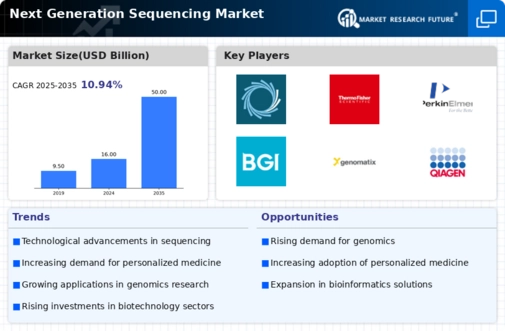
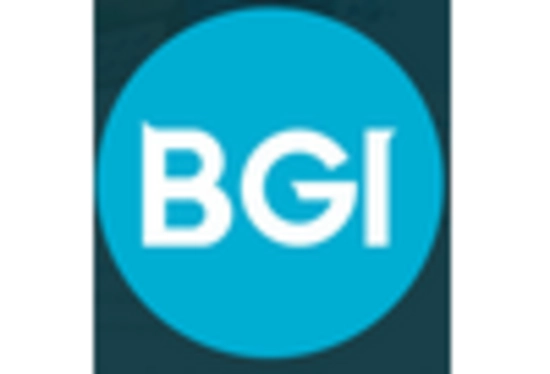
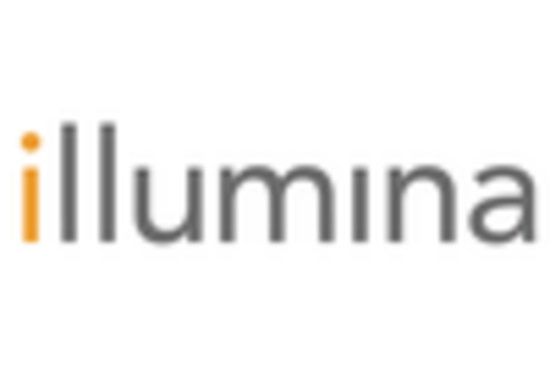
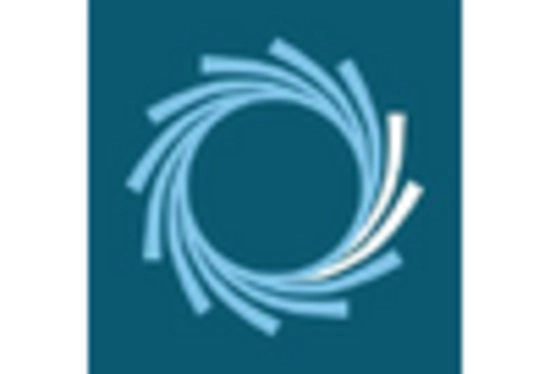
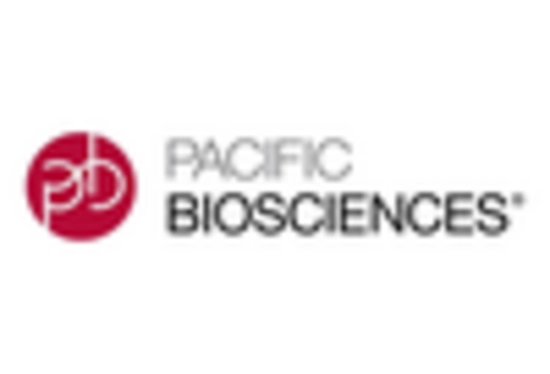
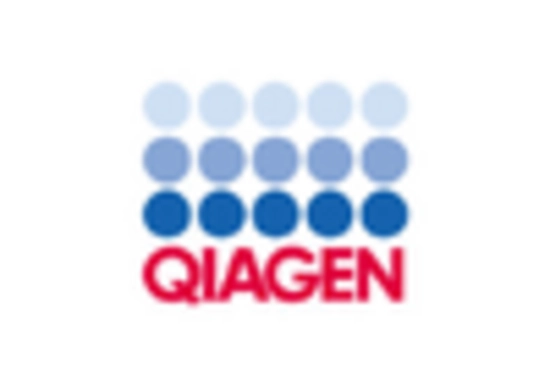


Leave a Comment